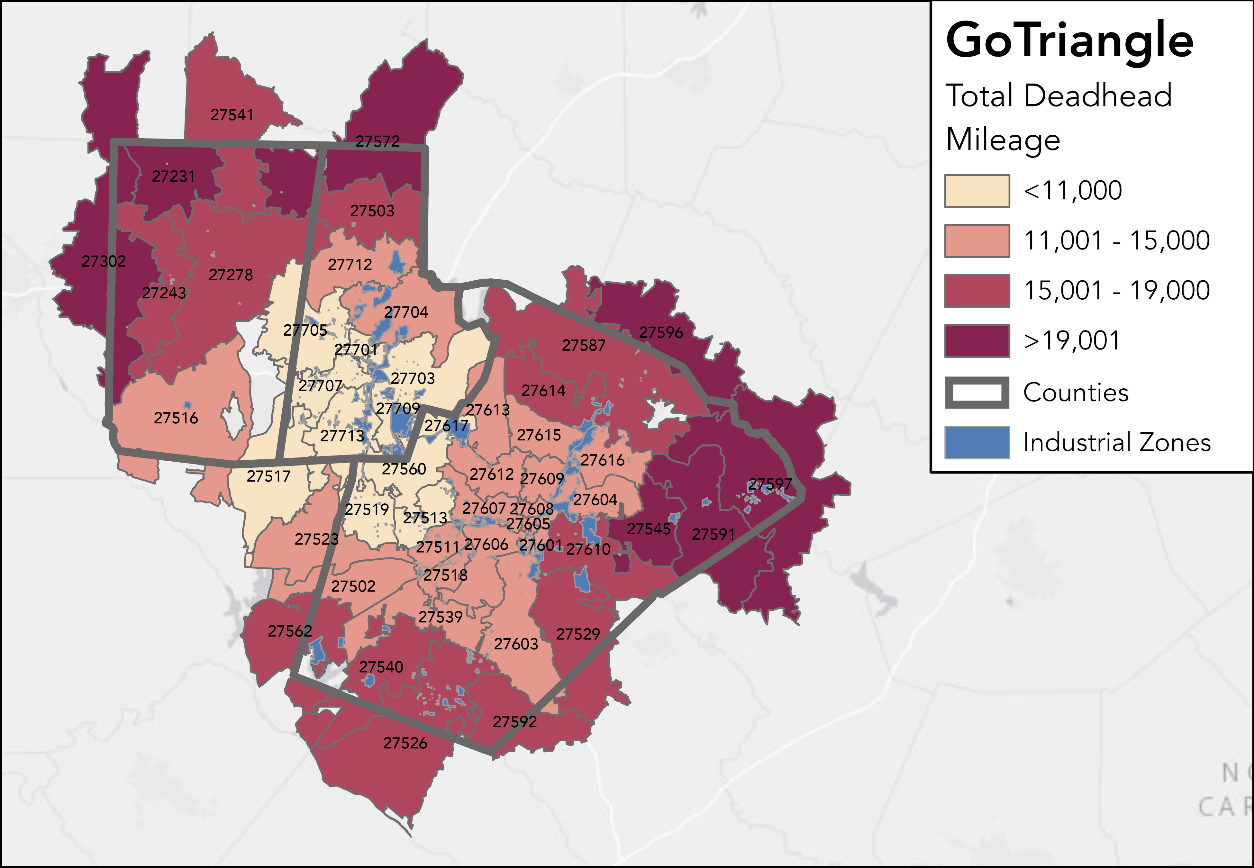Foursquare ITP identified and evaluated the feasibility and impact on transit operating costs of various maintenance facility sites for the GoTriangle and GoDurham transit systems. In order to determine potential impacts on fleet size and facility needs, our team analyzed the agencies’ future service plans and existing block data. To facilitate the transition to battery electric vehicles, we also developed a methodology to estimate the impact of fixed-route service expansion and demographic changes on paratransit fleet needs. The results of the fleet data analysis guided facility size requirements and the development of scenarios.
Foursquare ITP developed a regional routable GIS network and model to optimize fixed-route and paratransit non-revenue services across existing and potential operations and maintenance (O&M) facilities locations. Using future routes levels of service and start and endpoints, Census block group centroids for estimated paratransit trips starts and ends, and the Network Analyst in ArcGIS, our team calculated non-revenue trip paths from all existing and potential facility sites. These results were compiled into a database that informs each scenario’s non-revenue miles totals and potential operating cost savings, which will guide a scenario and actual site selection.
Our team led a detailed review of existing bus and paratransit services operated by GoTriangle and GoDurham which will serve as an input in the model we developed to determine ideal ZIP codes for facilities locations. We also played a lead role in assessing the impact of new services and bus fleet electrification on bus fleet size, defining the need for the new facilities, and estimating the potential cost savings.

Solutions and Outcomes
- Developed model to determine ideal ZIP code for facility location based on shortest deadhead travel distance.
- Developed analysis to estimate the impact of fixed-route service expansion and demographic changes on paratransit service needs.